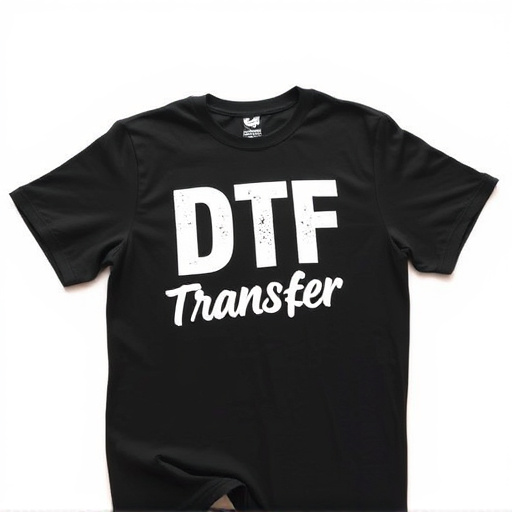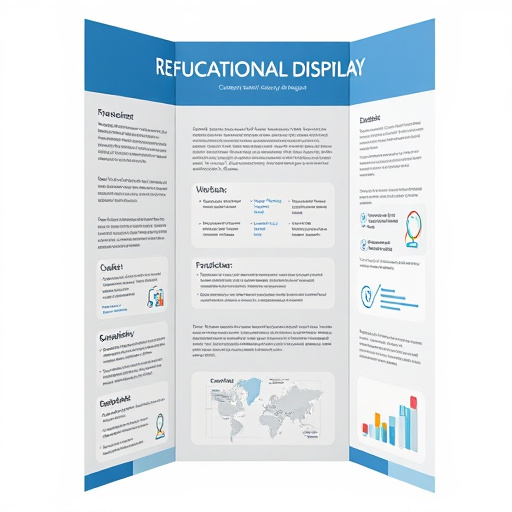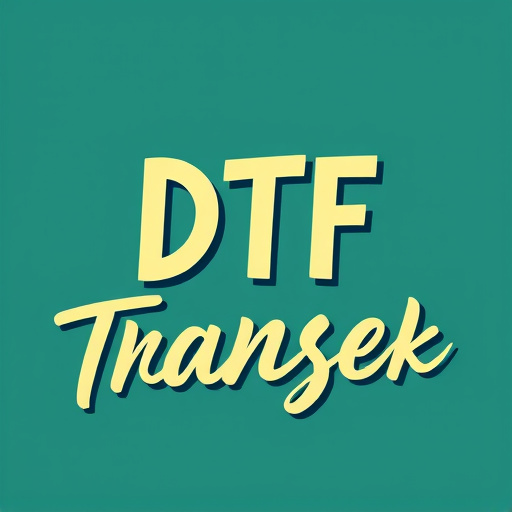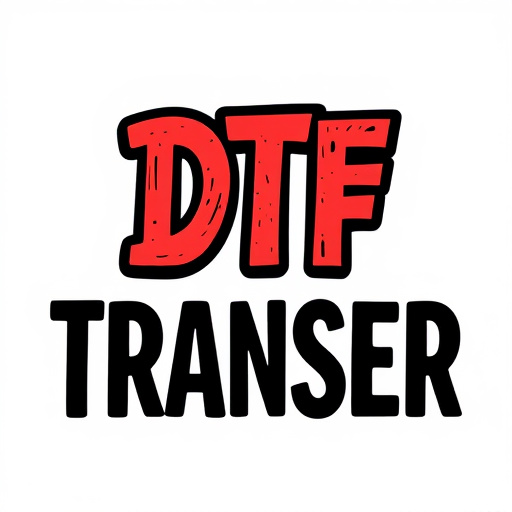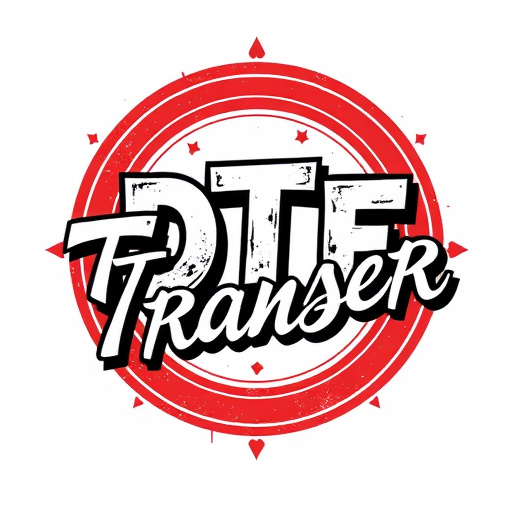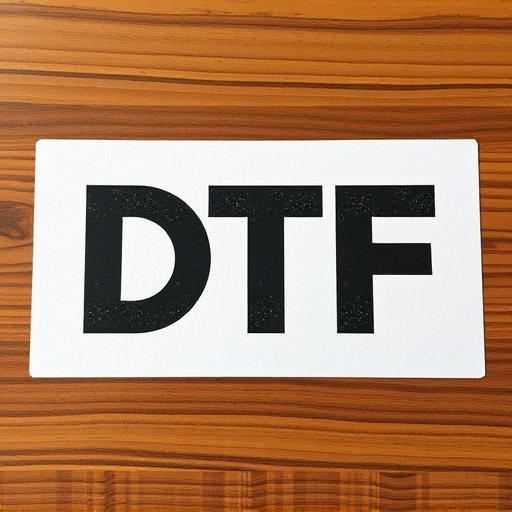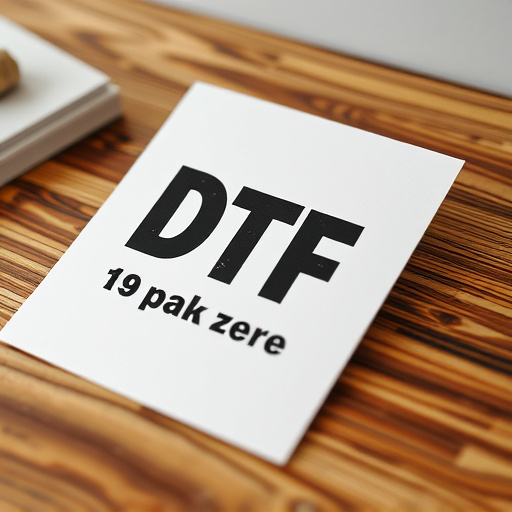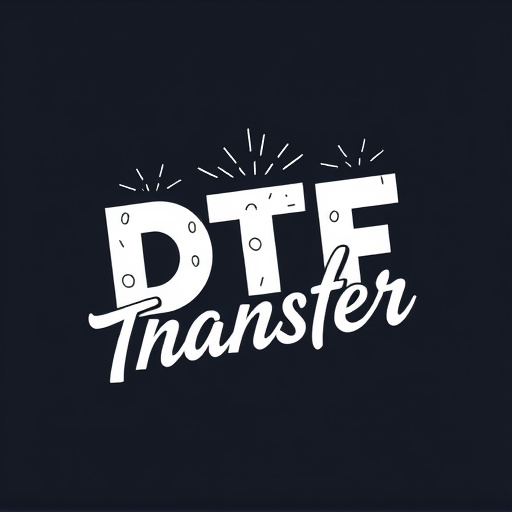Direct-to-film (DTF) transfers are revolutionizing printing by enabling high-quality, high-volume production on diverse materials without intermediate steps. This technology offers significant advantages like faster production times, reduced waste, and improved durability, making it ideal for businesses in signage, textile printing, and promotional products facing large orders and tight deadlines. DTF's consistent results make it a reliable solution for dynamic markets. To maximize quality, follow best practices such as using high-quality films, selecting appropriate stock, calibrating colors precisely, maintaining optimal transfer temperature, and automating batch processing. Future developments include advanced technologies like micro-masking, cloud-based platforms, and material science advancements, promising faster speed, better sustainability, and enhanced resolution.
Direct-to-film (DTF) transfers are transforming high-volume business operations by offering a fast, efficient, and cost-effective solution for large-scale printing and packaging. This article delves into the world of DTF technology, exploring its advantages for businesses, from enhanced efficiency to reduced waste. We’ll unpack the technical aspects, highlight diverse industry applications through case studies, and discuss best practices for optimal results. Additionally, we’ll gaze into the future, considering emerging trends that are shaping this dynamic industry.
- Understanding Direct-to-Film Transfers (DTF): A High-Volume Solution
- Advantages for Business Operations: Efficiency and Cost-Effectiveness
- Technical Aspects: Equipment and Process Overview
- Applications in Various Industries: Case Studies
- Best Practices for Optimal DTF Transfer Results
- Future Trends: Evolving Technologies Shaping the Industry
Understanding Direct-to-Film Transfers (DTF): A High-Volume Solution
Direct-to-film (DTF) transfers are a game-changer for businesses looking to print high volumes while maintaining exceptional quality. This innovative process eliminates the need for intermediate steps, such as printing on paper or vinyl, and then transferring the image to the final medium. Instead, DTF technology allows for precise direct application of ink onto various materials, including fabric, metal, wood, and more.
By skipping the transfer stage, DTF offers numerous benefits: faster production times, reduced waste, and improved durability. It’s particularly ideal for businesses like signage companies, textile printers, and promotional product manufacturers who regularly handle large orders with tight deadlines. This efficient, high-volume solution ensures consistent results, making it a reliable choice for meeting the demands of dynamic markets.
Advantages for Business Operations: Efficiency and Cost-Effectiveness
Direct-to-film (DTF) transfers offer significant advantages for business operations, particularly in terms of efficiency and cost-effectiveness. By eliminating the need for intermediate steps like printing on paper or plastic, DTF transfers streamline workflow, reducing turnaround time and labor costs. This direct approach ensures that final products are of high quality while minimizing material waste, further enhancing cost savings.
Moreover, DTF transfers enable businesses to quickly adapt to changing market demands. With fast production times, companies can promptly respond to orders for customized or bulk products, maintaining a competitive edge in today’s dynamic business landscape. This agility, coupled with consistent quality and reduced expenses, makes DTF transfers an invaluable asset for high-volume business use.
Technical Aspects: Equipment and Process Overview
Direct-to-film (DTF) transfers for high-volume business applications involve a sophisticated process and specialized equipment. The initial step comprises preparing the film stock, ensuring it’s clean, and properly aligned for exposure. High-resolution printers then utilize UV or laser technology to accurately transfer images onto the film, minimizing errors and maximizing detail retention.
The exposure process takes place in controlled environments, where light intensity and duration are meticulously adjusted based on the film type and desired outcome. Following exposure, the film undergoes development, fixing, and washing stages to create a negative image. This negative is then used for mass production, enabling consistent and high-quality prints across various media.
Applications in Various Industries: Case Studies
Direct-to-film (DTF) transfers have found their way into various industries, revolutionizing the way businesses handle high-volume printing needs. Their versatility is evident in multiple sectors, each with unique requirements and challenges. For instance, in retail, DTF technology enables dynamic window displays and promotional materials, allowing stores to update visuals swiftly and cost-effectively. The quick turnaround time ensures that retailers can adapt to changing trends and promotions without significant delays or investments in inventory.
In the logistics industry, DTF transfers play a crucial role in creating customized packaging solutions. Businesses can now easily produce personalized labels and stickers, enhancing product tracking and identification. Additionally, the technology aids in rapid prototyping and small-batch production, enabling startups and established companies alike to test market ideas swiftly. These case studies demonstrate how DTF transfers streamline operations, reduce costs, and foster innovation across diverse business landscapes.
Best Practices for Optimal DTF Transfer Results
To achieve optimal results with Direct-to-film (DTF) transfers for high-volume business use, several best practices should be followed. Firstly, ensure your source material is of high quality; any imperfections or low resolution will be magnified in the final product. This means investing in top-tier original films or digital masters. Next, choose the right film stock suitable for your intended use and application, as different materials have varying characteristics and durability.
Additionally, precise color calibration is crucial. Utilize professional color grading software to match the source material’s colors accurately, ensuring consistency across all prints. Another key factor is temperature control during the transfer process; maintaining a consistent and optimal temperature prevents unwanted artifacts and ensures a crisp, high-quality image. Lastly, for high-volume transfers, consider automated or batch processing methods to increase efficiency without sacrificing quality.
Future Trends: Evolving Technologies Shaping the Industry
Direct-to-film (DTF) transfers are poised for significant evolution, driven by advancements in technology and increasing business demands for high-volume, efficient solutions. The industry is witnessing a shift towards more sophisticated printing techniques, such as micro-masking and advanced laser technologies, that enable higher resolution and color accuracy, meeting the growing need for vibrant, detailed prints.
Cloud-based platforms and automated workflows are also transforming how businesses manage their DTF processes. These innovations streamline operations, reduce manual errors, and facilitate remote collaboration, ensuring faster turnaround times and improved productivity. As technology continues to march forward, we can expect further enhancements in material science, printing speed, and environmental sustainability, shaping the future of direct-to-film transfers for years to come.
